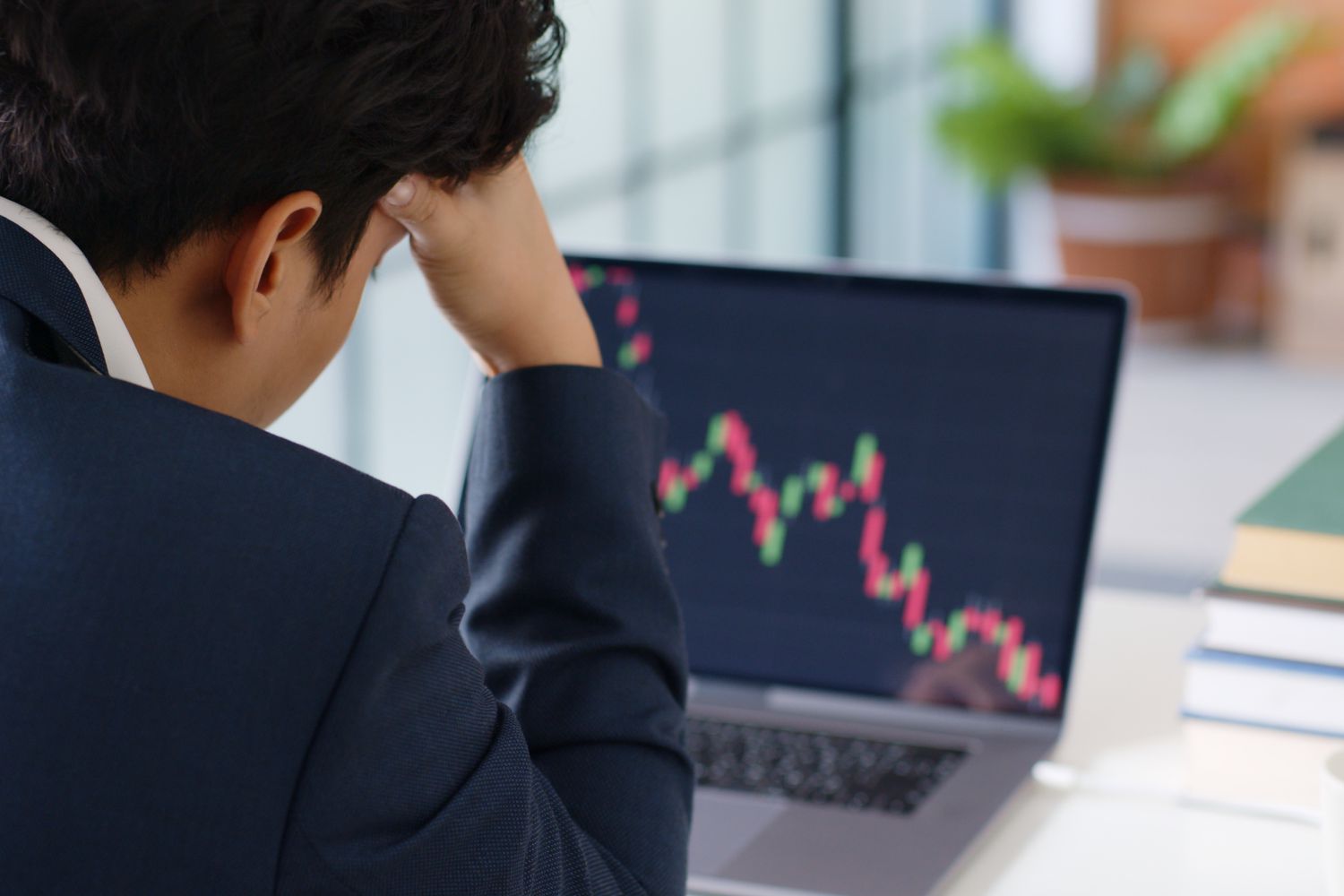Get ready for humanoids … gold sets a new all-time high … why gold miners could be a better bet … a deeper dive into tariffs with Charles Sizemore
As I write Tuesday morning, gold is setting another all-time high.
This doesn’t come as a surprise to regular Digest readers. We’ve been tracking the yellow metal for years. And even when investors wanted nothing to do with it, we were urging readers to recognize the eventual rally that would come – and establish at least a small position.
Here’s how our global macro expert Eric Fry described those gold-price doldrums back in summer 2022:
The yellow metal is barely registering a pulse at the moment. Most of the wax figures inside Madame Tussauds museum seem more vibrant and lifelike.
But that’s simply how gold behaves from time to time. It “does nothing” for such extended periods of time that investors begin to doubt it could fog a mirror.
Gradually, they turn their back on the comatose metal and leave it for dead. But that’s usually about the time it comes to life.
Well, gold has certainly “come to life.” It’s jumped 40% over the last 12 months while the S&P has returned less than a quarter of that amount.

Source: TradingView
But today, there is a more profitable way to look at gold.
Start looking at gold miners
At the beginning of the month, we urged readers to look at top-tier miners. We highlighted a break in the relationship between gold’s price and the price of leading gold mining stocks.
Typically, top miners make moves that are 2X- 3X the size of gold’s move (for good and bad). This reflects the swelling profits that miners enjoy as gold’s market price rises above breakeven costs…or the snowballing losses they suffer when prices swing the opposite way.
But in recent years, miners haven’t fallen in line with this historical price relationship.
Here’s Mining.com:
The gold miners’ stock prices have largely decoupled from their metal, which overwhelmingly drives their profits.
This fundamental disconnect has spawned a shocking valuation anomaly, with gold stocks far too low relative to gold. But this aberration won’t last, as markets abhor extreme deviations from precedent.
Mean reversions and proportional overshoots soon follow, so gold stocks will soar to reflect their record earnings.
The “catch up” has begun
Below, we compare the performance of the VanEck Gold Miners ETF, GDX, to gold over the last three months (disclosure: I own GDX).
While gold’s 14% climb – and fresh all-time highs – are receiving all the headlines, GDX has nearly doubled that return, clocking in with 27% gains.

Source: TradingView
Better still, it appears there’s plenty more juice in the tank since miner valuations have been so depressed in recent quarters.
On that note, here’s Barron’s from last month:
Gold stocks, despite their gains, really do look like bargains.
The VanEck ETF trades at just over 12 times 12-month forward earnings, a 44% discount to the S&P 500’s 22 times, a much wider gap than the 10-year average of 20%.
Narrowing the price/earnings gap to that average discount would bring the ETF up to just over 16 times, landing it, once again, at $51.
If you’re looking to play this, GDX is still an option.
On March 5, I also highlighted Agnico Eagle Mines (AEM) and Alamos Gold (AGI). Since then, AGI is up 6.6% and AEM is up 7.6% while the S&P has fallen 3.5%.
Circling back to Eric, he put his Investment Report subscribers into Westgold Resources (WGXRF) in mid-January. They’re already sitting on 48% returns.
To learn more about joining Eric in Investment Report, click here.
We’ll keep you updated as gold and gold miners continue climbing.
Can a mission to Mars help this stock?
Last Friday, Tesla CEO Elon Musk wrote that Starship will head to Mars at the end of next year carrying Optimus.
Humans aren’t far behind.
From Musk:
If those landings go well, then human landings may start as soon as 2029, although 2031 is more likely.
To make sure we’re all on the same page, Starship is the world’s largest, most powerful rocket from Musk’s company SpaceX.
Optimus – from Musk’s company Tesla – is an advanced humanoid robot.

Source: @Tesla
Space travel will be big business…eventually.
But long before we’re taking vacations to Mars, we’ll be living in a world filled with humanoids.
For more on Optimus and humanoids, let’s go to our technology expert, Luke Lango, editor of Innovation Investor:
Everyone who’s anyone in the tech world is betting on humanoid robots being the next big AI breakthrough. Elon Musk, the world’s richest man, is certainly all-in on them.
His firm Tesla (TSLA) has created a humanoid robot called Optimus, which is already being used inside Tesla factories to complete a variety of tasks.
The company plans to ramp Optimus production to use them in its factories worldwide. It’s said that next year, it will start selling its robots to outside companies. And after that, it aims to offer them to consumers like you and me.
Humanoids are going to be big business
Multi-trillion-dollar business, in fact.
Here’s some of what Musk said about them on Tesla’s Q2 earnings call:
- Long-term, Optimus has the potential to generate $10 trillion in revenue.
- It won’t be many years before we’re making 100 million robots a year.
- My long-term prediction is that Optimus will overwhelmingly be the value of [Tesla].
- I see a path for Tesla to be the most valuable company in the world, possibly bigger than the next five companies combined, overwhelmingly due to autonomous vehicles and autonomous humanoid robots.
This isn’t just hyperbole.
Independent research on the potential market size for humanoids support Musk’s enormous vision. Let’s go to ETF provider and research shop, GlobalX:
The potential market opportunity for humanoids is massive, and it’s accelerating.
Tesla CEO Elon Musk and industry stakeholders believe there could be over 1 billion humanoids on Earth by the 2040s…
The potential of general-purpose humanoid robotics remains largely untapped, with their appeal being their versatility.
To estimate the market for general-purpose humanoids, GlobalX assumes 15% household penetration and a price point of $10,000 – $15,000. That results in a market size of almost $3 trillion by 2035.
When we consider the size of the market for industrial humanoids, GlobalX puts the total addressable market size at nearly $2 trillion over the next decade.
Plus, we’ll see additional bespoke humanoids created for a variety of sectors.
Bottom line: We’re looking at an enormous market only a handful of years from now…and it’s barely in its infancy today.
So, how do you invest?
Looking beyond Tesla, Luke writes Meta, Apple, Alphabet, Nvidia, and OpenAI are just a few of the companies working on aspects of humanoid technology.
If you’d prefer to spread your money around, you could go the ETF route. There are a handful of “robot” ETFs, with one example being the First Trust Nasdaq Artificial Intelligence & Robotics ETF (ROBT).
However, Tesla is still the front-runner. I’ll add that Tesla’s stock is down 51% from Christmas!
But before you open your brokerage account to buy, Luke has a related idea to consider:
I think Elon Musk and his AI robot Optimus have the potential to profoundly change the world and go down in history as Musk’s greatest achievement.
And I’ve found a “backdoor” way to invest in this new Optimus project.
For more on this stealth robotics play, Luke put together a free research video. You can check it out right here.
Stepping back, whether the idea of intermingling with humanoids everyday thrills or terrifies you, get ready – it’s headed our way.
Checking in on the tariff wars…
As we’ve been covering in recent Digests, tariffs have the potential to kneecap today’s relatively healthy economy.
If used briefly as negotiating leverage, our economy will likely ride through the turbulence with little more than some bumps and a few bruises.
But the longer that tariffs are in place, the greater the risk they: 1) reignite inflation, 2) drag down corporate profits, and 3) push some lower-income Americans over the financial cliff, increasing our chances of a recession.
To help you contextualize tariff-related headlines, let’s look a little closer.
On Sunday, on CBS’s Face the Nation, Secretary of State Marco Rubio said:
For 30 or 40 years we have allowed countries to treat us unfairly in global trade…
But now that has to change… I understand why these countries don’t like it. The status quo of trade benefits them, they like the status quo. We don’t like the status quo.
We are going to put tariffs on countries reciprocal to what they put on us.
Theoretically, I’m on board if the ultimate goal is to force fewer trade restrictions.
But on a trade case-by-case basis, how unfairly have we been treated?
For example, as you’re aware, the Trump administration implemented a 25% tariff on imports from Canada.
Does this new levy match a 25% tariff that Canada has had in place on the U.S., per Rubio’s general suggestion?
Not from what I can tell. According to the World Trade Organization’s 2023 data, Canada’s simple average Most-Favored-Nation (MFN) applied tariff was 3.8% for all products. For agricultural products, the tariff was 14.8%.
For added perspective, prior to Trump’s 25% tariff on Canadian goods, U.S. tariffs toward Canada were somewhat like Canadian tariffs toward the U.S.
According to the Tax Foundation, the average U.S. tariff on all U.S. imports (including Canada) was approximately 2.5% in 2024. However, certain Canadian products had higher tariffs, such as softwood lumber. Last summer, President Biden raised its tariff from 8.05% to 14.54%.
Now, perhaps I’ve missed it. If you’re aware of Canada having taxed U.S. goods at 25%, email us at [email protected]. But if that’s not what was happening, then the blanket 25% tariff seems inconsistent with what we heard from Rubio.
A pushback is that the elevated Canadian tariffs are due to Canada’s inability to stop fentanyl smuggling
If this is the case, some perspective is needed.
From the Canadian government:
Fentanyl seizures by the United States Customs and Border Patrol at the Canada-U.S. border Represent less than 0.1% of U.S. fentanyl seizures between 2022 and 2024.
And for added context, between 2022 and 2024, approximately 61,900 pounds were seized at the U.S.’s southwest border with Mexico.
Meanwhile, the total weight of seizures at the Canadian border clocked in at just 59 pounds.
To be clear, we’re not against tariffs…we’re against tariffs that could tip us into a recession
On that note, let’s turn to our geopolitical expert, Charles Sizemore.
For newer Digest readers, Charles is the Chief Investment Strategist at our corporate partner, The Freeport Investor, where he marries political and macro analysis with the investment markets.
From Charles:
The general consensus going into the election was that Trump’s threat of tariffs was a negotiating tool. Many thought he wasn’t really going to slap 25% tariffs on our trading partners. It was just a warning shot to get their attention.
Trump made similar threats in 2016. And he eventually settled on a renegotiated NAFTA, rebranded as the United States-Mexico-Canada Agreement (USMCA) in 2020. The USMCA created slightly better trading terms for the U.S. than the original NAFTA, but the overall agreement didn’t change all that much.
While something similar might happen this time around, it’s not looking that way. Our trading partners aren’t in a deal-making mood. They’re angry.
And businesses – American and foreign – don’t know what to do or how to plan because the tariff rates and potential starting dates are changing by the day.
Investments are frozen. Hiring is stalled. Decision makers are paralyzed. They’re waiting for the dust to settle before they do anything.
Those aren’t favorable conditions for the robust earnings that stocks need to sustain a bull market.
Charles isn’t recommending getting out of the market in The Freeport Investor. However, he is hedging his bets today while recommending investors focus on high-quality blue-chips, as well as well as energy stocks, infrastructure plays, and – you guessed it – gold stocks.
Charles’ subscribers are up 30% in one gold miner they opened last September. They’re up 49% in a second gold play opened in 2023. And Charles’ latest golden recommendation from about this time last month is up almost 6%.
To learn more about The Freeport Investor, click here. If you’re interested in how politics impacts the markets, this is a fantastic resource.
We’ll keep you updated on Charles’ latest analysis, gold, and additional tariff details here in the Digest.
Have a good evening,
Jeff Remsburg


































